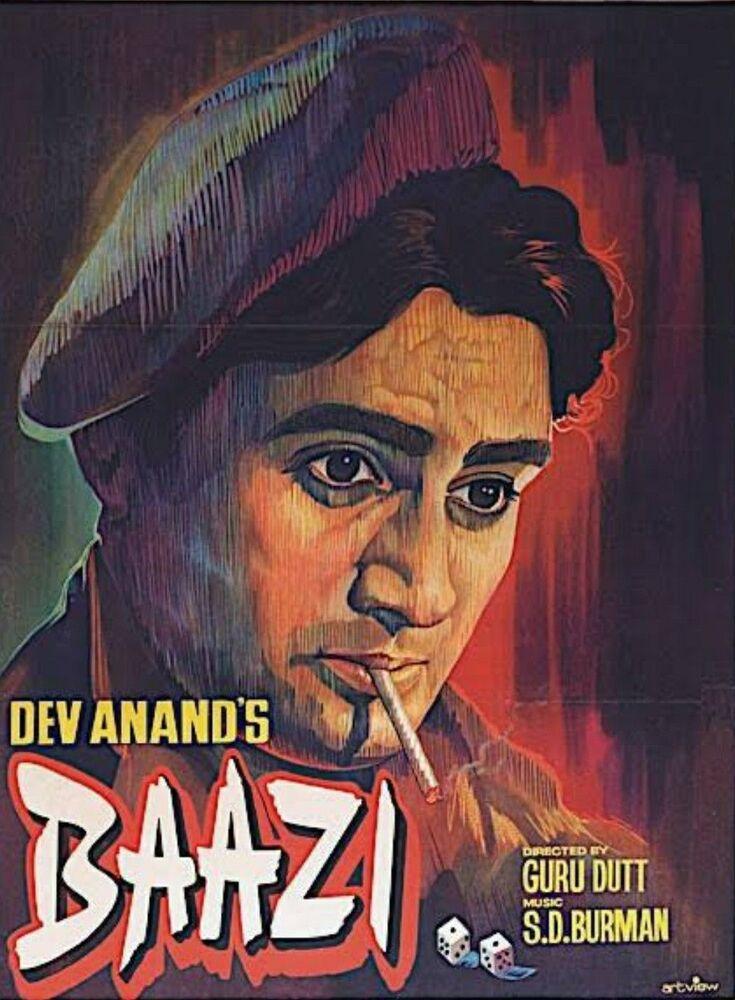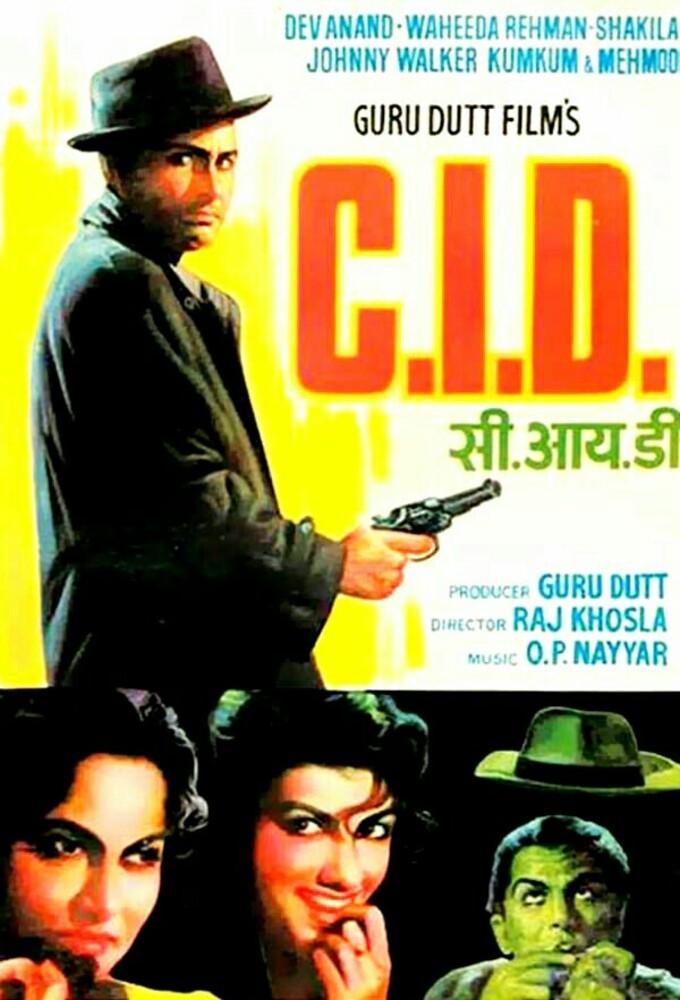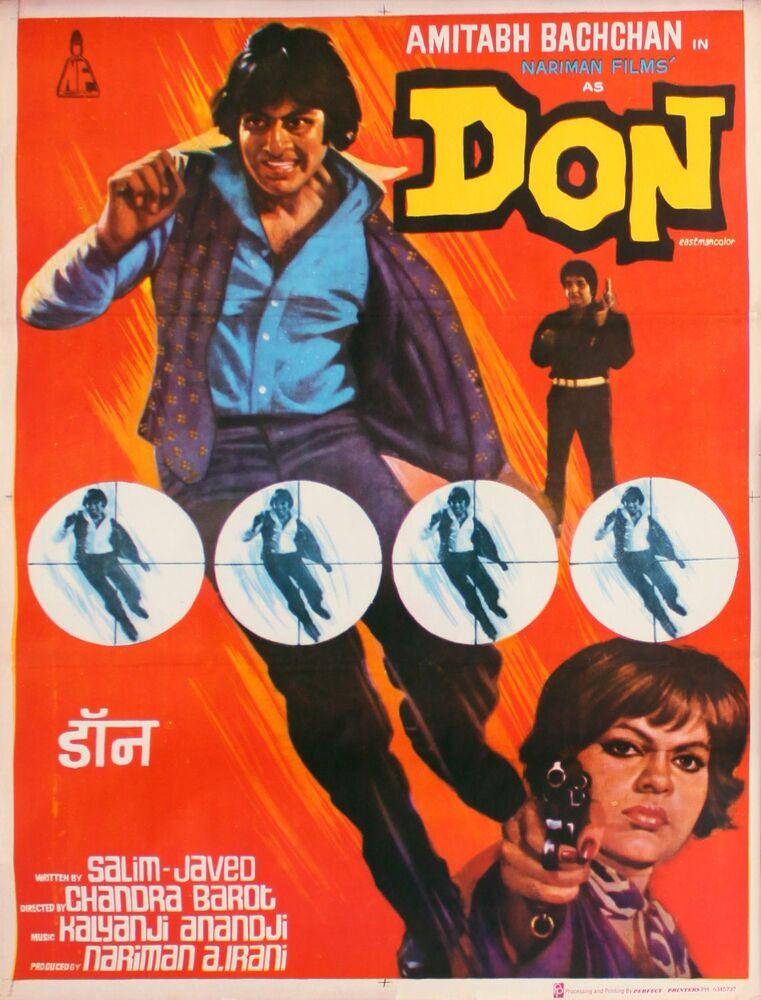The Film Poster as Art Object: Excerpt from Ranjani Mazumdar’s The Bombay Film Poster

Poster for Baazi (1951). Dir. Guru Dutt.
The film poster occupies an important place within the world of cinema, in India and around the world, operating as an object of publicity from the beginning of the twentieth-century till today. Despite global technological transformations, the printed poster continues to be a relevant feature of film distribution. These posters are meant to provide a sense of the narrative, theme and star cast of the film via still image(s) and text, historically designed to arouse curiosity among cinema audiences and lure them to the theatre. In India, however, the status of the film poster is complex: it offers multiple meanings, acting simultaneously as a marketing device, a commodity, film memorabilia, and, over the last few decades, as an art object.
Ranjani Mazumdar’s study of the Bombay film poster, originally published by Seminar in 2003, is a seminal text that offers a glimpse into the composite values that characterise film posters and locates it within an expanded visual culture. The extract below looks at the relatively recent development of film posters being iconised as rare collectibles, moving away from the public spaces they would traditionally occupy and into private homes, galleries and museums. The hand-painted film poster is, then, an art object, a nostalgic commodity that one can read as an alternate archive of cinema and its history.

Poster for C.I.D (1956). Dir. Guru Dutt.
Walter Benjamin, in his well-known theses on the destruction of aura after the birth of the photograph had envisioned a time when multiplication and mechanical reproduction would enable the possibility of art becoming a genuinely democratic form, accessible and available outside the rarified space of the art museum (Benjamin, Walter. "The Work of Art in the Era of Mechanical Reproduction," in Illuminations, Schocken Books [New York, 1969], pp. 217-251). In a strange twist, the original hand-painted film poster which was seen plastered on walls in various parts of the country and available for a price of five rupees in the streets till the early 1990s, has now acquired the status of an "art" form as collectors enter the field of preservation, display and sale of the traditional poster.
This process can be seen as an instance of what Arjun Appadurai has described as commoditization by diversion where value is "accelerated or enhanced by placing objects and things in unlikely contexts." (Appadurai, Arjun. Introduction to The Social Life of Things: Commodities in Cultural Perspective, ed. Arjun Appadurai, Cambridge University Press, Cambridge, 1986, p. 28). The objects referred to here can be seen in the domain of fashion, domestic display and collecting. Appadurai suggests that this narrative of diversion rests on the commodities removal from its customary circuits through a coming together of the ‘aesthetic impulse’ and the "entrepreneurial link."
Initially overlooked as an art form because of its direct relationship to commercial networks of publicity, today the gradual disappearance of the traditional poster from the streets and public places where it had traditionally found a home, has made it a more respectable item to be studied, looked at and placed within the rarified atmosphere of galleries and homes. Just as the photographic, digitally created image becomes the dominant icon in contemporary poster culture, the hand-painted, ‘authentic’ Bollywood poster acquires auratic power as collectors and museums compete with their own collections.
Now framed as a dying art form, or as a print of cultural history, the traditional poster acquires the status of a new commodity even as the contemporary form itself gets more commodified and influenced by techniques of advertising. As collectors vie for the possession of posters that are subsequently sold in the market at exorbitant prices, the former film poster enters the chain of commodity exchange, once easily accessible but today a rare item and piece of artwork. Collectors deploy their entrepreneurial skills to divert the poster away from its customary circuit, in the process accruing it with "aesthetic power.”

Poster for Don (1978). Dir. Chandra Barot.
Read the full essay here.




